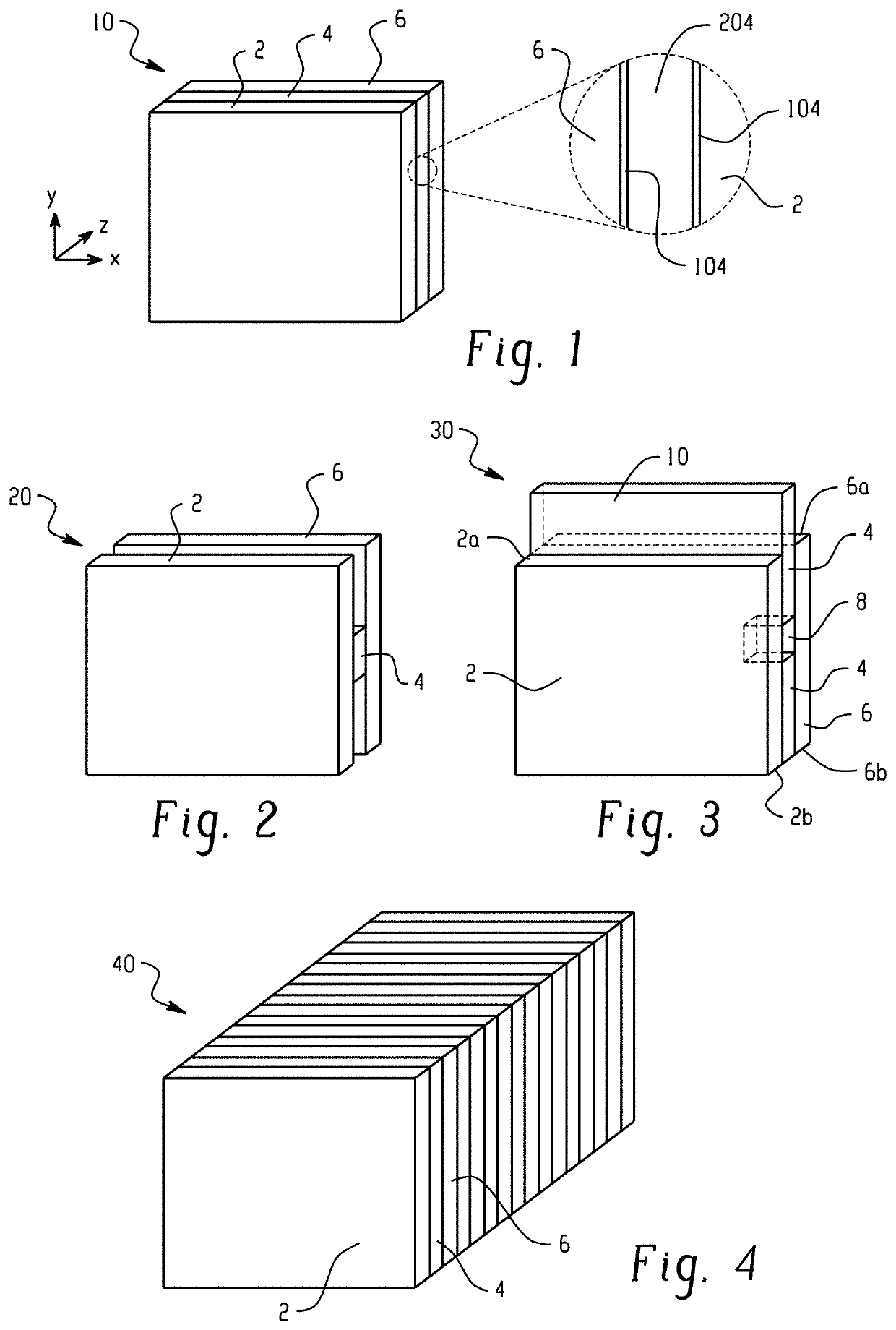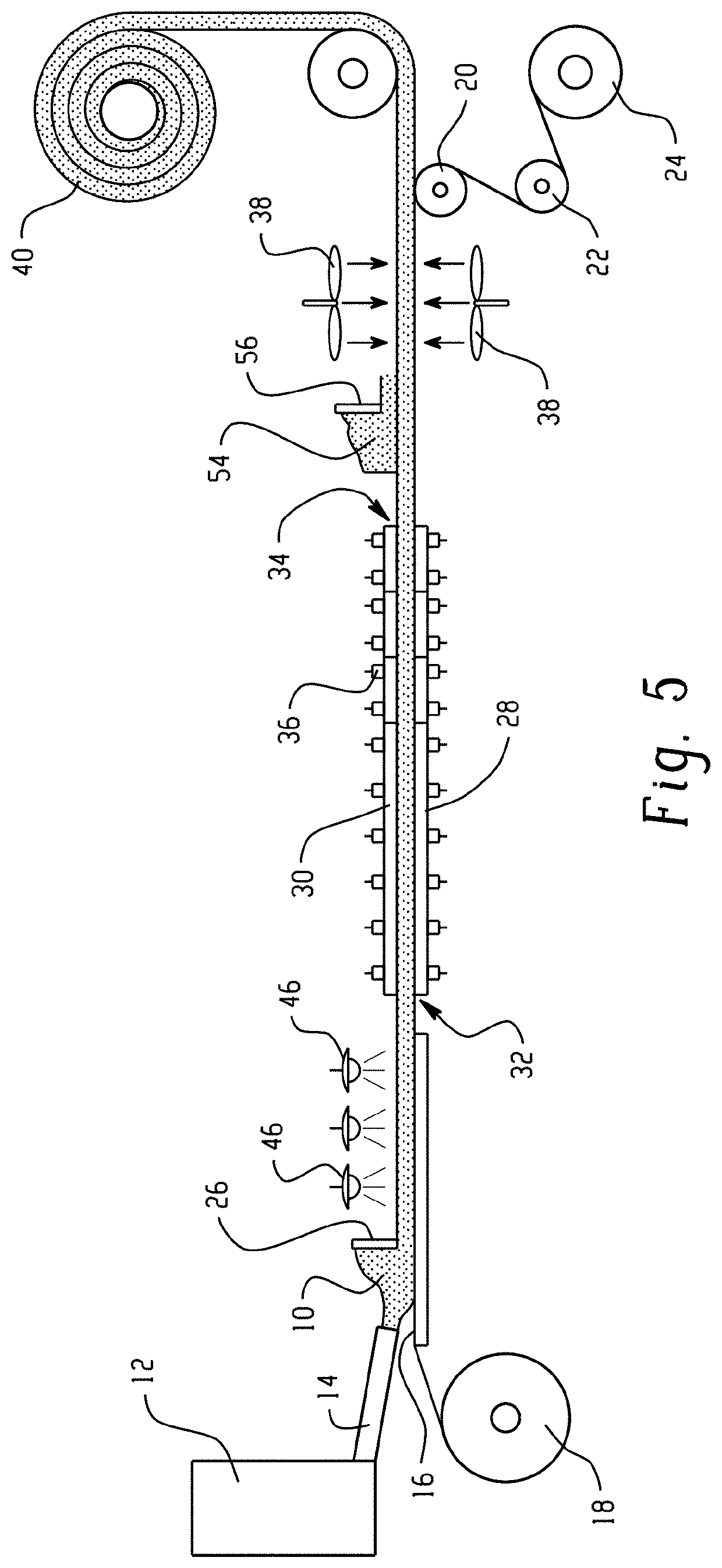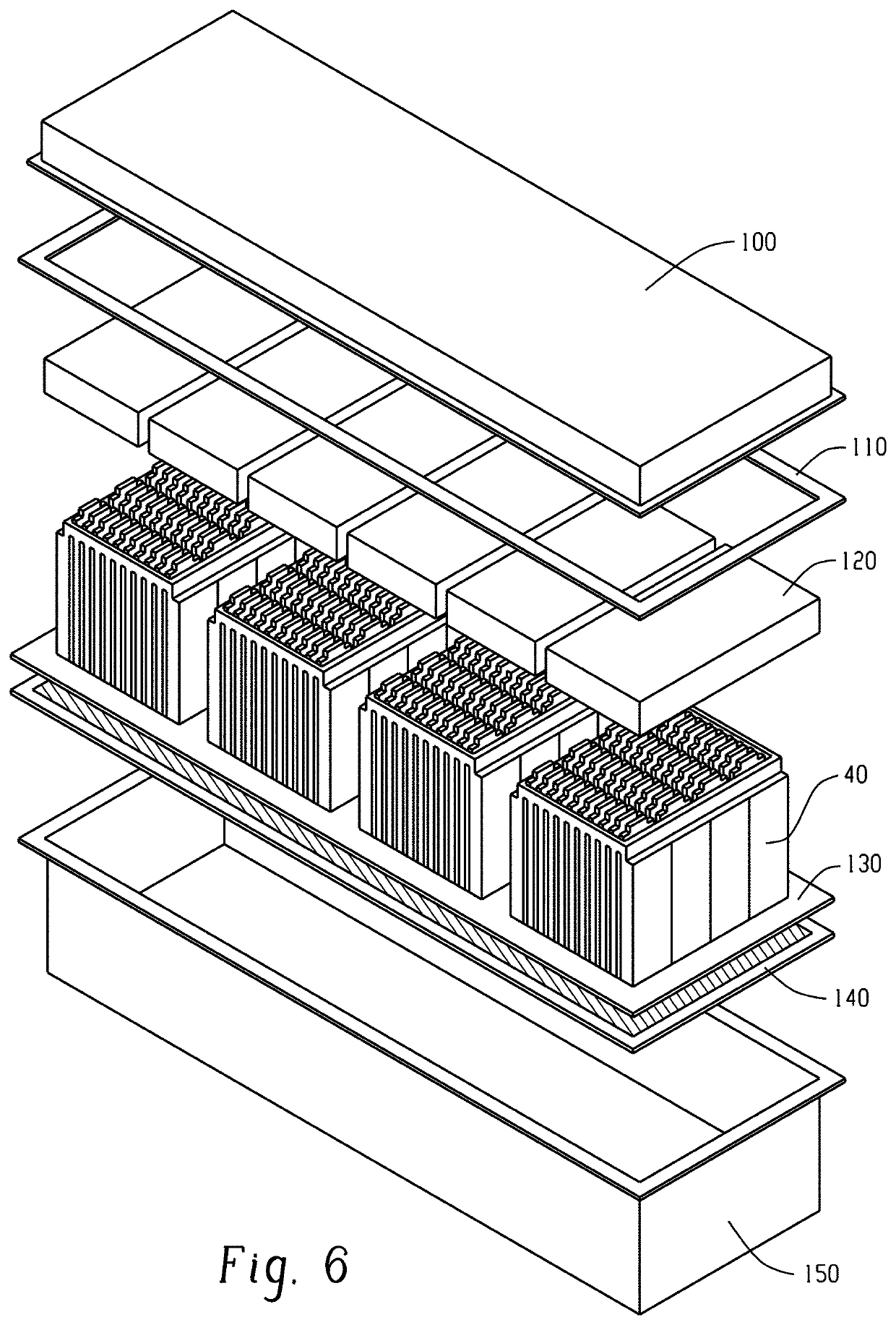Intumescent battery pad
- Summary
- Abstract
- Description
- Claims
- Application Information
AI Technical Summary
Benefits of technology
Problems solved by technology
Method used
Image
Examples
example 1
[0063]Seven PORON brand polyurethane foams were cut into strips having a thickness of 3 mm. An intumescent paint was spread onto the broad surfaces of three of the polyurethane foams and three of the polyurethane foams were dip coated into an intumescent paint. The seventh polyurethane foam did not comprise the intumescent paint.
[0064]The samples were then tested according to the Underwriter's Laboratory (UL)-94 flammability test at a thickness of 1 millimeter. FIG. 7 shows the samples after the flammability test, where the three polyurethane foams on the left were painted and the three polyurethane foams on the right were dip coated. The dip coated polyurethane foams achieved a UL-94 V0 rating and show a relatively small amount of char at the top of the foams. The painted polyurethane foams achieved a UL-94 V1 rating, where FIG. 7 shows some charring, especially towards the top of the foams. This increased charring relative to the dip coated foams is due to the fact that the edges ...
PUM
 Login to View More
Login to View More Abstract
Description
Claims
Application Information
 Login to View More
Login to View More - R&D
- Intellectual Property
- Life Sciences
- Materials
- Tech Scout
- Unparalleled Data Quality
- Higher Quality Content
- 60% Fewer Hallucinations
Browse by: Latest US Patents, China's latest patents, Technical Efficacy Thesaurus, Application Domain, Technology Topic, Popular Technical Reports.
© 2025 PatSnap. All rights reserved.Legal|Privacy policy|Modern Slavery Act Transparency Statement|Sitemap|About US| Contact US: help@patsnap.com



